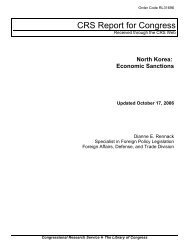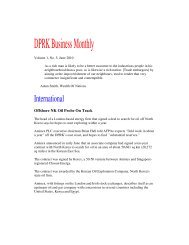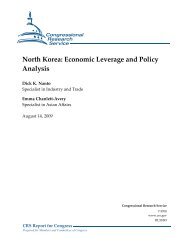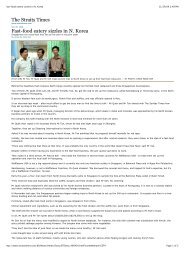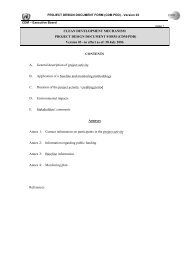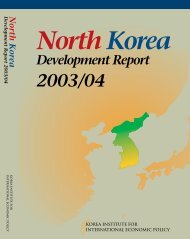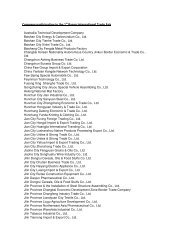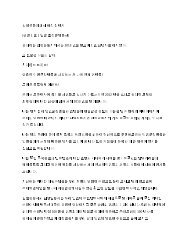North Korean Policy Elites - Defense Technical Information Center
North Korean Policy Elites - Defense Technical Information Center
North Korean Policy Elites - Defense Technical Information Center
Create successful ePaper yourself
Turn your PDF publications into a flip-book with our unique Google optimized e-Paper software.
esearch institutes and “think tanks.” The Reconnaissance Bureau (see below) is responsible for<br />
the collection of tactical and strategic intelligence within the military sphere, and strategic<br />
special operations throughout the ROK and overseas.<br />
Intelligence and Internal Security Services<br />
The primary mission of the DPRK’s intelligence organizations is to actively collect and<br />
disseminate timely and accurate information concerning any possible political, military, or<br />
economic threat to the security of the nation or to its political and military leadership, and to<br />
conduct subversion activities against the ROK. The primary missions of the DPRK’s internal<br />
security organizations are to protect the government and KWP from domestic threats and to<br />
prevent or neutralize any foreign intelligence collection or subversion activities against the<br />
DPRK. The DPRK’s intelligence and internal security organizations are the primary means by<br />
which foreign information enters the DPRK and reaches the military elite as processed<br />
intelligence.<br />
The DPRK’s intelligence organizations have proven that they are capable of fulfilling<br />
their missions, especially within Asia. Intelligence collection outside of Asia is problematic as a<br />
result of the DPRK’s expanding economic crisis and political isolation in the international<br />
community. The DPRK’s internal security organizations have proven to be extremely effective.<br />
While the missions presented above suggest a distinct separation of external and internal<br />
security responsibilities, the reality of the situation is somewhat more ambiguous, with various<br />
agencies often having overlapping areas of responsibility; in some cases, the agencies are in<br />
competition with each other (see below). For example, all agencies have an internal security<br />
responsibility to some degree, and internal security agencies have conducted positive intelligence<br />
operations within the ROK and overseas.<br />
The organization of the intelligence and internal security community originates with Kim<br />
Chong-il and proceeds down through three distinct paths (see Figure 3): National <strong>Defense</strong><br />
Commission, KWP, and Cabinet. Subordinate to the National <strong>Defense</strong> Commission are the<br />
MPAF and State Security Department. Subordinate to the MPAF are the Reconnaissance Bureau,<br />
Security Command, and Guard Command. The paths through the KWP and Cabinet are<br />
relatively short. Subordinate to the KWP is the office of the Central Committee Secretary in<br />
Charge of South <strong>Korean</strong> Affairs (CCSKA), which controls four intelligence-related departments.<br />
Subordinate to the Cabinet is the Ministry of Public Security. 11<br />
11<br />
Author interview data, <strong>North</strong> <strong>Korean</strong> Special Forces—Second Edition,; A Handbook on <strong>North</strong> Korea, p. 20; and<br />
Bermudez Jr., Joseph S., Terrorism: The <strong>North</strong> <strong>Korean</strong> Connection, Taylor & Francis, New York, October 1990.<br />
I-10



